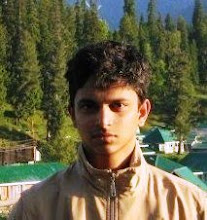Nigel Britto
When they filed in, even the chapel's usually hyper-active resident owl knew it was time to be quiet. Throughout the performance, it sat sagely on a ledge above the choir, occasionally peering down at the stately bunch as they presented their unique blend of classics, originals and smart adaptations of popular hymns, to a packed house at the Monte Music Festival on Saturday.
The Paranjoti Academy chorus, led by its formidable conductor and director Coomi Wadia, has an unbroken tradition of over half a century, and although based in nearby Mumbai, Saturday's recital was their first in Goa in over 40 years. Thus, it wasn't surprising that busloads of people made their way up the winding path to hear the legendary choir that has traditionally had a good number of Goans in their ranks.
Perhaps used to their tasks as the flag-bearers of the choral genre in India, the 32-member ensemble wasted no time in getting started. After all, the acoustics at the Our Lady of the Mount chapel necessitate no amplification; the purity of the voices, Wadia's minimal, near-inconspicuous hand gestures, and the choir's elegant attire (men in black, women in purple) gave the choir an air of stateliness and professionalism not usually associated with western musical ensembles in India.
They began the performance with Poili Santa, an arrangement by their founder, Victor Paranjoti, who, despite having passed away many years ago, seems to be with his group in spirit. The Konkani ovi (Goan songs sung during pre-marriage bangle ceremony) instantly connected with the audience. Konkani is just one of 22 languages the choir sings in; they have songs in Bengali, Tamil and even Polish in their vast repertoire.
Asathoma Satgamaya (based on the Brihadaranyaka Upanishad), which came next, was in Sanskrit, and was arranged by Wadia herself. A little later, the language switched to Hindi (So-jaa re, so-jaa), English (Judge me, O God) and Latin (Cantate Domino). What makes the choir's mastery of shifting among language and song so incredible is their ability to memorize entire presentations. Add to that, the Paranjoti normally performs Acapella, as they did in Goa; the absence of both accompanists and musical scores makes their ability to hit the right notes together at the right time all the more commendable.
It's sometimes lost in the unity the choir presents, but the Paranjoti is an amalgamation of various individuals from all walks of life who come together as one. Their joint power was evident in the Paranjoti-arranged Hymn to St Francis Xavier. In the entire concert, the only soloist was Cynthia Thyle, a soprano, who sang William Dawson's Mary had a baby and Paranjoti's Kyrie Eleison, backed by the choir. Yet, the choir's sound is far more than merely the sum of its parts, though overall, the women's section appeared a tad stronger and surer than the men's. The tones were perfect; right from the blood-curdling lows to the hair-raising highs, there was no evidence of any lacuna in the choir members' mastery of their craft.
The post-interval session started with only half the choir on the platform. It was sometime into Duo Seraphim that the other half, which by now had reached the gallery behind the audience, joined in. The combination of the voices from different directions was magical; everyone's heads turned up in wonder. Even the owl shifted its position, and it took a stern look from the conductor to get the choir back to their spots in time. A little later, the choir performed Madhura, madhura, parama madhura, which was arranged by Wadia's husband Nariman. The last song of the evening was He's got the whole world in his hands, which reflected the choir's versatility and peppiness apart from the musical perfection usually associated with them.
A standing ovation followed, that subsided only at Wadia's request. The choir performed two encores, the last of which was the hymn to St Francis Xavier they had performed earlier, at the audience's unanimous request.
The only notable weakness in the choir's presentation was in the bass section, but the beauty of the sound and perfection of dynamics negated that defect near-completely.
It was only after a long stream of congratulations to Wadia and the choir that the chapel emptied, the lights dimmed, and the buses filled. When all was done, the owl found it fit to fly away.
This article was first published on The Times of India, Goa, in its edition dated February 8, 2011.


No comments:
Post a Comment